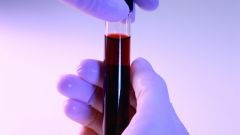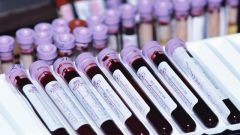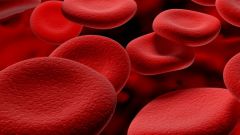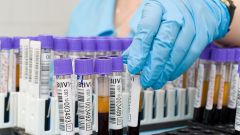There are several methods of determining the level of erythrocyte sedimentation rate. The most popular are the Panchenkov method and method Expressed. In the first case, in a special graduated capillary was placed a solution of sodium citrate, and then distribute it in a watch glass. Next, blow two times the blood is mixed with a solution and placed in a vertical tripod. Expressed method involves taking venous blood, which is diluted with sodium citrate and saline, and then placed in a test tube with the scale. Depending on the obtained results determine the velocity of red blood cells.
As a rule, the indication for the operation of a blood test are the screening tests, as well as the presence of diseases, which accompany inflammatory processes in the body. These different types of tumors, infectious diseases, heart attacks, etc. This is because the erythrocyte is able to reflect the course of inflammation.
Consider the factors at influence of which in the analysis of blood revealed increased erythrocyte sedimentation rate. The reasons are quite varied: change in protein composition, the number of red blood cells. For example, during pregnancy the change in protein composition is the norm. This is due to the insufficient content of iron in the blood, leading to anemia. Anemia or low red blood cell count leads to an acceleration of a sedimentation rate.
Also depending on time of day, the erythrocyte sedimentation rate may vary considerably. As a rule, the maximum rate can be locked in the daytime, in the morning and evening the speed can be slightly lower.
The most common diseases and disorders in the body, according to which there is an increased erythrocyte sedimentation rate are pneumonia, diseases of the liver (cancer, hepatitis, cirrhosis), kidney, endocrine system (diabetes), myocardial infarction, malignant neoplasms, leukemia, chemical poisoning substances, postoperative period, mechanical injury (fractures), shock, old age, pregnancy, menstruation, autoimmune diseases, etc.
For cancer patients , elevated erythrocyte sedimentation rate is a common indicator of changes in the composition of the blood. It should be noted that ESR is increased in Oncology is characteristic not for all patients, so it can not be the main method of diagnosis of the disease. Increase of erythrocyte sedimentation rate – is a clear proof of the presence of the tumor and the inflammatory process in the body. Very often, when improvement begins, the growth of metastases.
There are various methods by which an increased ESR can be reduced to the optimum level. Of course, first of all, you need to contact an experienced physician in the field of therapy, he conducted a qualitative survey and identified the cause of increased erythrocyte sedimentation rate. As a rule, the complete elimination of the inflammatory process, the indicator returns to normal without any additional manipulation.
There are folk remedies to reduce speed. You can take 3 small beets, wash thoroughly and cook for 2-3 hours. The resulting decoction, take 50 grams on an empty stomach daily for weeks. Then make the rest of the week and again repeat the course of treatment. Effectively help decoction of rose hips, hawthorn, as they promote thinning of the blood and increase hemoglobin in the blood.










